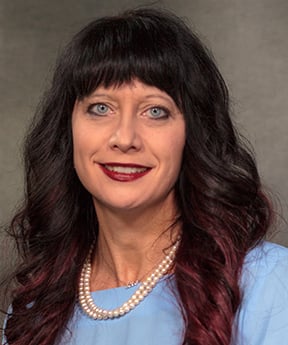
Helping inmates and residents develop empathy can help break the cycle of crime. That's why CoreCivic uses nationally recognized victim impact programming to help people in our care appreciate the impact of crimes on both victims and their communities.
Our victim impact programs follow the curriculum set forth by the national Office for Victims of Crime. The program is voluntary and includes open discussions, victim testimonies, and guest speakers who are victims, ex-offenders, or members of community organizations.
CoreCivic Director of Treatment and Behavioral Services Michelle Ryder-Grebel oversees the company's victim impact programming. In the Q&A below, she shares some of the latest updates.
Q: CoreCivic’s victim impact programs have grown significantly in the last three years. How was that accomplished?
A: We took the time to get it right. We spent a full year in 2015 building out the program and training staff before we launched it. CoreCivic had victim impact programs available at four facilities at the time, and we wanted to expand it in a way that would have a lasting, positive impact on inmates and residents who participated.
Once we got the program going, a lot of facilities bought into it and were eager to join. The curriculum is first-rate, but having volunteers share their experience being victims of crimes can be a very powerful way to motivate offenders to change their perspective.
Q: What, if any, changes is CoreCivic making to build on the success of its victim impact programs?
A: We learned to modify the program to fit the unique needs of each facility and its population. We don’t use a one-size-fits-all approach. For example, some facilities like jails have higher turnover than prisons because the inmates are serving shorter amounts of time there. We made some modifications for those facilities without changing the critical components of the program. The inmates participating still get the content and the experience of hearing victims’ perspectives, but they participate on a different timeline.
We are in the process of developing our own video that will enhance the program by expanding upon issues such as empathy, forgiveness, and the ripple effects of negative choices made by our participants.
Q: What kind of feedback have you gotten from inmates, volunteers and staff about the program?
A: Our staff has been supportive of the program, and they’re eager to learn and bring it into the facilities. For inmates and residents, though, it can be life-changing. I’ve heard stories of inmates vastly improving their conduct after going through the program. As one of our facilitators recently shared, an inmate wrote that he’d always considered himself a victim until he went through the program. He wrote that the course inspired him to make amends when he was released by helping other ex-offenders repair their pasts.
It’s often a cathartic experience for volunteers too. They have been victims of crime in the past, but they choose to reframe their experiences. Forgiving the people who harmed them opens up so many other opportunities for emotional wellness for both victim and offender. Victims and offenders can both go on to positively impact so many others in the prison system.
A study commissioned in 2015 by the national Office for Victims of Crime showed that inmates who complete victim impact programs are 40 percent less likely to return to prison within the three-year period following release. These success stories reduce crime and incarceration costs. They prove that people can put prison behind them, get back into society and build new lives.
